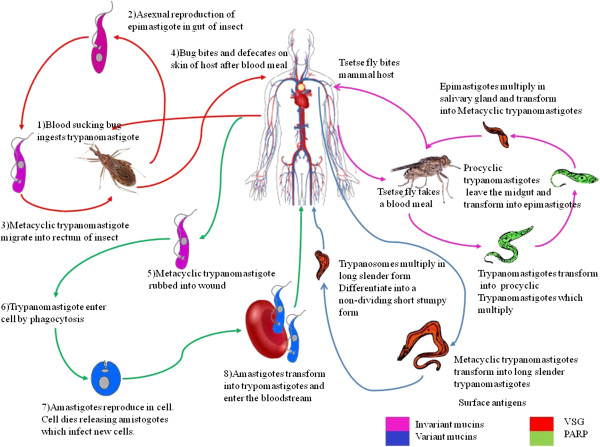Figure 2.
The lifecycle of Trypanosoma cruzi and Trypanosoma brucei. The life cycle of T. cruzi is shown on the left, that of T. brucei on the right. The two parasites use different strategies to escape the immune system of the mammalian host. T. cruzi enters cells to get away from the immune system. T. brucei escapes from the immune response by expressing a new VSG. These surface antigens vary after a period of time allowing the parasite to continually evade the host immune system. The parasites are coloured according to the surface antigens they display. Antigenic variation most likely evolved to aid in the transmission between the arthropod and mammalian hosts. Both pathogens express highly variant surface molecules Variant surface glycoprotiens (VSG) and variant mucins. However, in the arthropod host the parasites express invariant mucins and procyclic acidic repertoire protein (PARP).

